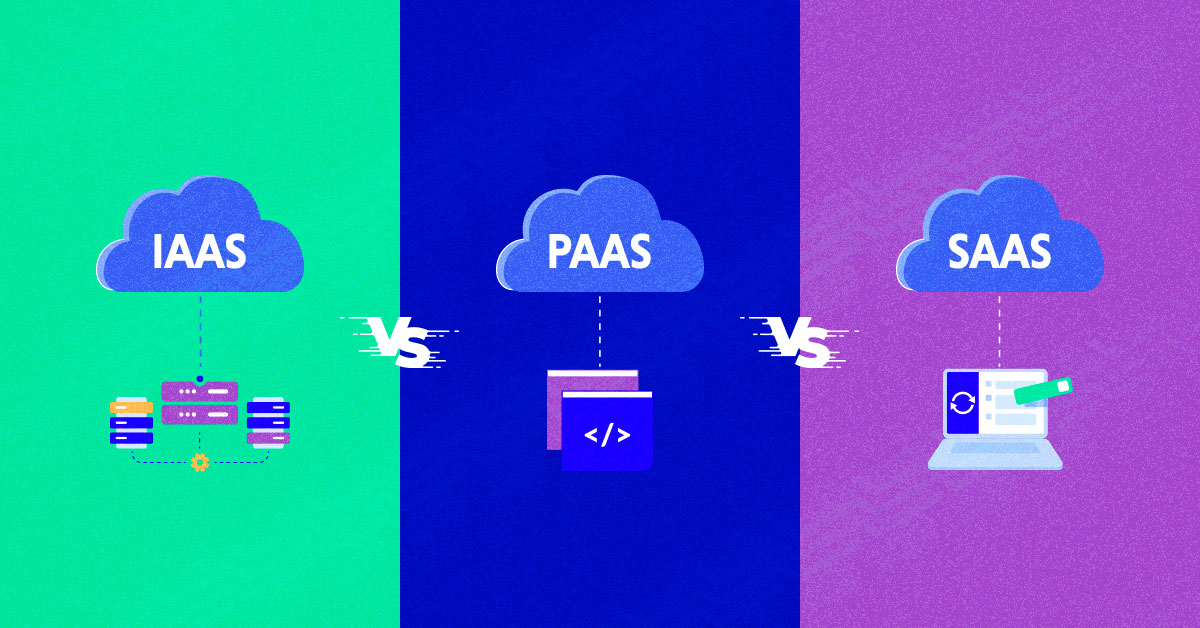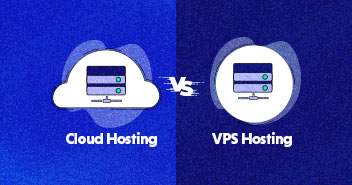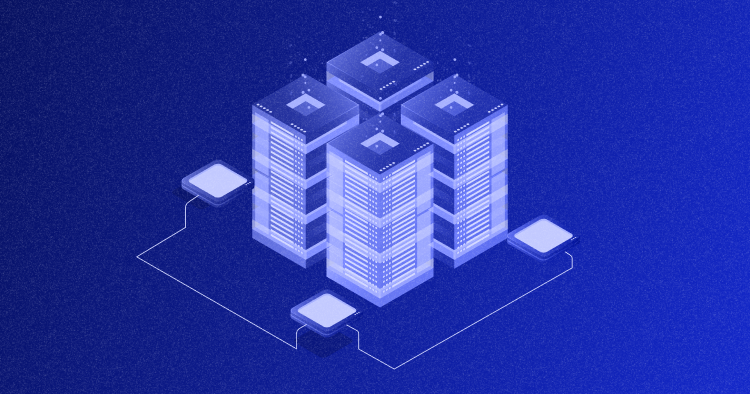
Online businesses rely on the cloud to facilitate their clients. This demands collecting, storing, and processing a vast amount of data before presenting it to the end-user.
That’s where cloud-based web applications come into play.
When talking about cloud services, the following three models come into mind:
- Software as a Service (SaaS)
- Platform as a Service (PaaS)
- Infrastructure as a Service (IaaS)
This blog will discuss IaaS vs. PaaS vs. SaaS in detail so that you can grasp a better understanding of how cloud-based services can help you scale your business.
Let’s first learn about cloud computing before jumping into the comparison of IaaS, PaaS, and SaaS.
Let’s first learn about cloud computing before jumping into the comparison of IaaS, PaaS, and SaaS.
What is Cloud Computing?
Cloud computing is a modern way to access data and information online rather than from a hard drive. The cloud server is fast, secure, affordable, and more efficient than traditional storage systems.
These days, everyone utilizes cloud computing in various sectors. It is especially a savior for growing and established businesses because it gives them the freedom to scale anytime.
With the cloud, you are not dependent upon hardware and can access your data virtually anywhere. As your data lives online, it is available to you at all times.
Businesses no longer have to invest in heavy hardware thanks to cloud computing, but simply pay for the additional space and scale with ease.
Types of Cloud Computing Services
Here is a brief comparison of Infra-structure as a service vs Platform as a service vs Software as a service.
| IaaS | PaaS | SaaS | |
| What is it? |
|
|
|
| Pros |
|
|
|
| Cons |
|
|
|
| Providers |
|
|
|
Want to try out DigitalOcean Cloud Hosting?
Affordable hosting plans with security and scalability.
Infrastructure as a Service (IaaS)

Infrastructure as a Service provides the fundamental building blocks for cloud infrastructure, as well as computing resources like processing power, virtual machines, networking, and more to its users.
IaaS facilitates small-sized businesses and organizations seeking an inexpensive cloud solution to support their business. It works on the pay-as-you-go model, so a user has to pay for only the services they use, negating any extra charges. It is available to the users as a public, private, or hybrid deployment model.
This cloud computing service eliminates the additional costs for managing and using the hardware resources, focusing on outsourcing these services to a service provider.
In an IaaS environment, the end-user is only responsible for managing the resources, such as the data and applications. The vendors manage the virtualization, networking, and data storage.
IaaS helps the user save time and costs as the service provider manages the hardware setup. Since the resources are used only when needed, it abolishes the wastage of unused resources, and one has to only pay for the resources they use.
Examples: Amazon Web Services (AWS), Google Compute Engine (GCE), Microsoft Azure, and DigitalOcean. Check out the comparison of DigitalOcean with other providers.
When to Use the IaaS Model?
If you’re a startup or a business giant and require a “pay-as-you-go” cloud computing model, IaaS is the right choice.
You should opt for IaaS if you’re trying to scale up your business while keeping an eye on your expenses or having vast amounts of data that need processing and storage.
IaaS is also for people worried about their in-house infrastructure suffering from a disaster and data loss; they can put their minds at ease knowing their data is not on the website but on a remote data center. IaaS services also include networking.
Popular Companies That Use IaaS Computing Service
Many popular industry titans run on IaaS. Some of them include:
- Google Cloud Engine
- Microsoft Azure
- IBM Cloud
- Amazon Web Services
- Rackspace
- Verizon Enterprise
- Oracle Cloud
- VMware
- Adobe
- Phoenix NAP
- Red Hat
- Kamatera
Pros and Cons of Using IaaS
Pros
- Affordable
- Flexible
- Disaster recovery
- Accessible
- Reliable
Cons
- Lack of control
- Data security issues
Platform as a Service (PaaS)

With Platform as a Service or PaaS, an external party provides tools to its users via the internet. The third parties involved in PaaS offer their tools and services on their own infrastructure to users for application development.
PaaS allows developers to create a scalable application. It provides them with a framework that eliminates the need to manage or set up the databases, servers, networks, and storage infrastructure.
Newbies can benefit from PaaS’s support for easy application development so that anyone can develop their applications via their web browsers. PaaS takes responsibility for updating your infrastructure, so you don’t have to worry about your application’s maintenance.
Businesses use PaaS as a solution in environments where multiple developers work on the same project. It offers quick application creation due to its easy scalability and flexibility.
Examples: AWS Elastic Beanstalk, Apache Stratos, Force.com, OpenShift, Heroku.
When to Use the PaaS Model?
You should opt for the PaaS cloud services if you want to scale your business & run web apps without incurring hefty software and hardware setup costs.
PaaS primarily focuses on protecting your data, which is vital in the case of storage as a service. Also, if you want your developers to focus on building applications and not on running security patches, you should consider using PaaS. It will save you loads on costs, efforts, and time.
Popular Companies That Use PaaS Computing Service
Some of the popular industry names that use PaaS are mentioned below:
- Cloudways
- Cloud Oracle
- Google Cloud Services
- Microsoft Azure
- Amazon Web Services
- SalesForce
Pros and Cons of Using PaaS
Pros
- Cost-effective
- Increased productivity
- Agile and responsive
- Easy scalability
- Easy accessibility
Cons
- Compatibility issues
- Vendor changes
Software as a Service (SaaS)

Software as a Service or SaaS provides you access to a web application through the internet. It does not require you to download any tools or software. It may be free or use a pay-per-use model.
A user can directly access the application from any device without worrying about the cloud infrastructure, its maintenance, or anything else. All of this is protected and managed by the cloud service providers. You can check the businesses like Wellyx that are providing SaaS to their valuable clients.
Businesses like SaaS models as they’re widely available, don’t require any major costs, or the trouble of downloading and installing the software. However, it heavily relies on outside vendors, and the user has almost little to no control over its changes.
Examples: Google Workspace (formerly GSuite), Salesforce, Cisco WebEx, and Dropbox.
When to Use the SaaS Model?
If you want to ditch the traditional way of installing apps in your own data centers, then SaaS is the right choice as it also eliminates the requirement of heavy budgets and workforce. SaaS offers you apps hosted by third-party providers through its software distribution architecture, making them accessible via the internet.
SMBs can use SaaS hosting when they don’t have the budget or workforce to build their own apps. Many IT professionals and organizations use SaaS apps; even B2B and B2C users can use SaaS apps, unlike the other cloud computing services.
Unlock Seamless SaaS Hosting with Cloudways!
Switch to Cloudways today and propel your web applications forward with enhanced speed, security, and customization.
Popular Companies That Use SaaS Computing Service
The following list of companies are some of the popular names that use SaaS:
- Adobe Creative Cloud
- Netflix
- Google Workspace
- Microsoft
- Salesforce
- Cisco
- Slack
- Zoom
- Github
- MailChimp
- Figma
Pros and Cons of Using SaaS
Pros
- Scalable and accessible
- Affordable
- Easy to upgrade
- Easy deployment
Cons
- Insufficient data security
- Less control
IaaS vs. PaaS. vs. SaaS: What’s the Difference?
When you compare IaaS vs. PaaS vs. Saas in terms of resilience, IaaS stands out of the three. The resilience is purely dependent on the vendor you choose. The same goes for security as well. Typically charged per hour upon the usage of the services, IaaS costs can climb up because of the precise nature of billing.
On the other hand, PaaS lets you tackle advanced high-level programming by streamlining and simplifying the process. This makes the development of apps more cost and time-effective. The price, however, climbs up with the upscaling of your application. Once you commit to a PaaS provider, you’re locked in the environment and interface you have selected.
SaaS has a pricing edge on both PaaS and IaaS; it is cheaper than both, which makes it a saving grace for individuals and small businesses. But, with SaaS, unlike IaaS and PaaS, you have no control over management, as the service provider controls all aspects of it.
The chart below shows the cloud computing market size from the year 2018 to 2024, and the popularity of each cloud deployment model.

Source: t4
IaaS provides you the most freedom of control as it lets you manage your applications, data, middleware, and operating system. On the other hand, PaaS allows you to manage your data and applications only, and with SaaS, everything is managed by your service provider.
This explains the difference between IaaS, PaaS and SaaS, however, read here to know about the difference between cloud computing models like private, public or hybrid cloud.
What to Look For in a Cloud-based Infrastructure?
You must consider your website’s traffic and opt for the processing power and storage best suited to the amount of traffic your website receives. If you pick a cloud-based infrastructure that’s unsuitable for your site’s traffic, you can run into trouble.
Either your site will crash due to the lack of processing power, or you’ll have to choose an expensive cloud infrastructure when your site traffic is fairly low. Also, before choosing your cloud provider, you should consider the other two important factors, – downtime and migration.
Interested in trying out the cloud?
You can start with Linode cloud-based web hosting with Cloudways to explore the potential of cloud infrastructure!
Other Cloud Computing Services
Apart from IaaS, SaaS, and PaaS, there are a few more cloud deployment services:
- DBaaS
- DaaS
- FaaS
Let’s briefly learn about these services.
DBaaS
DBaaS or Database as a Service is a managed cloud service model that hosts your database and allows you to access database services without managing any software.
Like other cloud computing services, you don’t need to buy or set up your hardware or deal with any database software installation. In DBaaS architecture, your service provider looks after everything, from backups to updates, ensuring constant availability & robust security.
Pros
- Agile
- Budget-friendly
- Reliable
- You don’t have to build database systems or hire developers of database
- Excellent uptimes
Cons
- Limited control
- Data privacy
DaaS

DaaS, or Data is a Service, is a data management approach similar to SaaS. It delivers data storage, processing, and integration using a cloud to its end-users via the internet. Like SaaS, it does not require you to install or manage software on-premise.
DaaS helps users reduce data sprawl and data silos and allows for better collaboration among teams via data sharing.
Pros
- Data-driven culture
- Automated maintenance
- Data quality improvements
Cons
- Privacy
- Data complexity
FaaS
FaaS, or Function as a Service, is an event-based architecture that is also serverless. It works on the principle of a developer writing a function that can be executed in response to events. It also uses the pay-as-you-go model, so you don’t have to pay extra bucks.
Pros
- Pay only for what you use
- Automatic scaling
- Increased developer productivity
Cons
- Limited support for many technologies
- Less system control
Summary
To wrap this post up, you must invest in cloud computing if you want to keep up with changing standards. Not only will it help you serve your customers better, but it will also help your business grow. You can start with Cloudways to begin your journey with the cloud. It provides cloud hosting services from huge providers like AWS, Google Compute Engine, and DigitalOcean. However, you can also make use of managed Linode hosting or cloud-based vultr hosting offered by Cloudways.
It will iron out the kinks and limitations traditional IT infrastructures pose. Your decision between IaaS, PaaS, or SaaS, depending on how you wish to run your cloud-based applications.
FAQs
Why is IaaS better than PaaS?
Unlike PaaS, IaaS offers its customers direct access to its cloud servers and storage. It provides more flexibility, scalability, and networking layers. You don’t have to buy and install the underlying infrastructure because you can outsource it instead. You can demand and acquire resources and pay for them as you go.
When you compare cloud infrastructure as a service vs platform as a service, IaaS can be more resilient than PaaS. The resilience is purely dependent on the vendor you choose. The same goes for security as well. Typically charged per hour upon usage of the services, IaaS costs can climb up because of the precise nature of billing.
On the other hand, PaaS lets you tackle high-level advanced programming by streamlining and simplifying the process. This makes the development of apps more cost and time effective. The price, however, climbs up with the upscaling of your application. Once you commit to a PaaS provider, you’re locked in the environment and interface you have selected. That’s one of the differences between IaaS vs PaaS.
How to differentiate between SaaS, IaaS, and PaaS?
IaaS provides the fundamental building blocks for cloud infrastructure and computing resources like processing power, virtual machines, and more to its users. PaaS focuses on a model in which an external party provides tools to its users. SaaS is a cloud-based software that provides computing resources to the end-users via the internet.
Which is cheaper to use: SaaS, IaaS, or PaaS?
If we judge purely in terms of expenses, then SaaS is the cheapest of all three, then comes PaaS, and IaaS is the most expensive cloud computing service.
Is AWS SaaS, PaaS, or IaaS?
AWS is a hybrid of all three cloud computing services. It uses a combination of SaaS, PaaS, and IaaS to offer its services.
Sarim Javaid
Sarim Javaid is a Digital Content Producer at Cloudways. He has a habit of penning down his random thoughts and giving words and meaning to the clutter of ideas colliding inside his mind. His obsession with Google and his curious mind add to his research-based writing. Other than that, he's a music and art admirer and an overly-excited person.


